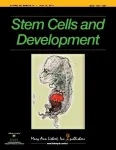Toxic facility relocation depends on community pressure
2021-07-21
(Press-News.org) URBANA, Ill. - No one wants to live near a toxic plant. Toxic-releasing facilities such as paper, pulp, and other manufacturing plants negatively affect human health, environmental quality, and property values. And communities with lower income and educational attainment are more likely to house such facilities.
Since mandatory reporting about toxic facilities became publicly available in 1990, affected communities have increasingly expressed concern through the media, and engaged in targeted collective action and "toxic torts" lawsuits for health and environmental damages.
New research from the University of Illinois explores the effects of community pressure on the relocation of toxic-releasing facilities.
"Current studies usually focus on the question of where new plants choose to locate. Our research looks at whether facilities make relocation decisions based on the socioeconomic characteristics of the community," explains Xiao Wang, graduate student alum from the Department of Agricultural and Consumer Economics (ACE) at U of I and lead author on the paper. Co-authors include Madhu Khanna, ACES distinguished professor in ACE; George Deltas, Department of Economics at U of I; and Xiang Bi, University of Florida.
Using the Toxics Release Inventory (TRI), an environmental disclosure program that makes information about these facilities publicly available, the study looks at how much community pressure can "push and pull" facilities to relocate, thus adding to environmental injustice when they move into disadvantaged communities. This effect results in a "redistribution of pollution," the researchers note.
Information disclosure programs like the TRI help to empower communities and the public to impose pressure on facilities to improve environmental performance. However, even with the TRI available to the general public, there are imbalances across communities, due to unintended consequences of the TRI as well as more ingrained socioeconomic inequities.
"Our study finds the extent to which communities can push out toxic plants differs based on their socioeconomic characteristics. After the disclosure of toxic release information, socially disadvantaged communities were less able to do so, and this resulted in facilities moving out of communities with higher educational status and income to those with lower," Wang explains.
The researchers found that toxic-releasing facilities are more likely to move from communities with high population density, income, and education level. On the flipside, a plant is more likely to migrate into communities with lower population density, income, and education level. Furthermore, the move is often associated with the plant's growth in both size and emissions. A facility will even plan to move in anticipation of the public disclosure of the TRI and the expected community backlash.
The authors conclude that policymakers need to consider the side effects of public disclosure programs like the TRI.
"Our study shows that TRI has the effect of redistributing pollution across locations. Policy makers need to consider the potential side effect of such a regulatory tool on distributional justice and strengthen the channels for vulnerable populations to voice their concerns about facility location in addition to strengthening zoning laws and regulations," Khanna states.
INFORMATION:
This study was made available online in April 2021 ahead of final publication in issue in May 2021.
The Department of Agricultural and Consumer Economics is in the College of Agricultural, Consumer and Environmental Sciences, University of Illinois.
The paper, "Community pressure and the spatial redistribution of pollution: the relocation of toxic-releasing facilities," is published in Journal of the Association of Environmental and Resource Economists(8)3, 577-616. Authors include Xiao Wang, Madhu Khanna, George Deltas, and Xiang Bi.
News writer: Katy Mosiman
ELSE PRESS RELEASES FROM THIS DATE:
2021-07-21
A new wearable brain-machine interface (BMI) system could improve the quality of life for people with motor dysfunction or paralysis, even those struggling with locked-in syndrome - when a person is fully conscious but unable to move or communicate.
A multi-institutional, international team of researchers led by the lab of Woon-Hong Yeo at the Georgia Institute of Technology combined wireless soft scalp electronics and virtual reality in a BMI system that allows the user to imagine an action and wirelessly control a wheelchair or robotic arm.
The team, which included researchers from the University of Kent (United Kingdom) and Yonsei University (Republic of Korea), describes the new motor imagery-based BMI system this month ...
2021-07-21
During the height of the pandemic, some hospitals were overwhelmed with patients seeking treatment for COVID-19. This situation could happen again during future outbreaks, especially with SARS-CoV-2 variants of concern on the rise. Now, researchers reporting in ACS' Analytical Chemistry have developed a blood test to predict which people infected with COVID-19 are most likely to experience serious symptoms, which could help health care workers prioritize patients for hospitalization and intensive care.
Although many people who contract COVID-19 have either no symptoms or mild ones, some require intensive care for pneumonia with acute respiratory distress syndrome. Risk factors for severe disease include older age, ...
2021-07-21
Since antiretroviral therapy (ART) for HIV was introduced in 1996, AIDS-related morbidity and mortality has declined significantly. People living with HIV are now expected to live nearly as long as people without HIV. Despite these advances, those living with HIV often report poor well-being and health-related quality of life.
To guide stakeholders in improving health system responses to achieve the best possible long-term health outcomes for people living with HIV, a global multidisciplinary group of HIV experts led by CUNY SPH Senior Scholar Jeffrey Lazarus and including Distinguished Professor Denis Nash and Associate Professor Diana Romero developed a consensus statement identifying the key issues health systems must address in order to move beyond the longtime ...
2021-07-21
Activism and the Clinical Ethicist
Christopher Meyers
Although clinical ethics scholarship and practice have largely avoided assuming an activist stance, the many health care crises of the last 18 months motivated a distinct change: activist language has permeated conversations over such issues as the impact of triage policies on persons with disabilities and of color, and how the health care system has historically failed African Americans. "This activism is, to my mind, an overdue and welcome turn, and my goal here is to defend it--generally and with particular ...
2021-07-21
ALBUQUERQUE, N.M. -- Researchers at Sandia National Laboratories have designed a new class of molten sodium batteries for grid-scale energy storage. The new battery design was shared in a paper published today in the scientific journal Cell Reports Physical Science.
Molten sodium batteries have been used for many years to store energy from renewable sources, such as solar panels and wind turbines. However, commercially available molten sodium batteries, called sodium-sulfur batteries, typically operate at 520-660 degrees Fahrenheit. Sandia's new molten sodium-iodide battery operates at a much cooler 230 degrees Fahrenheit instead.
"We've been working to bring the operating temperature of molten sodium batteries down as low as physically possible," ...
2021-07-21
Scientists have developed a new way to model and map the health of coral reef ecosystems using data collected on the Khaled bin Sultan Living Oceans Foundation's Global Reef Expedition. This innovative method, presented today at the International Coral Reef Symposium (ICRS), can determine which natural and anthropogenic factors are most likely to lead to persistently vibrant coral and fish communities. Their findings can help scientists identify the reefs most likely to survive in a changing world.
The new models are a first step in being able to produce maps of global coral reef resilience.
To create these models, scientist Anna Bakker needed a lot of data on coral reefs from ...
2021-07-21
Drugs must be safe not just for the patients; in the case of pregnant patients, drugs must also be safe for the unborn children still in the womb. Therefore, at an early stage in the development of new medicines, candidate substances are tested in the Petri dish on embryonic stem cells from mouse cell lines. This is to avoid that an embryo-damaging effect would only be noticed at a later stage during tests with pregnant mice.
However, these cell culture tests are a highly simplified version of what takes place in the uterus. Researchers just add the test material to a culture of embryonic stem cells in a Petri dish, and can identify substances that have a direct adverse effect on embryonic cells. By contrast, in the body of a pregnant woman, active pharmaceutical ...
2021-07-21
New Rochelle, NY, July 21, 2021-- Evaluating the efficacy of novel therapies requires the ability to monitor wound progression accurately and reproducibly over time. Researchers have proposed a new scoring system for wound healing in mice based on parameters in each phase of healing, as described in an article in the peer-reviewed journal Stem Cells and Development. Click here to read the article for free through August 21, 2021.
The parameters include re-epithelization, epithelial thickness index, keratinization, granulation tissue thickness, remodeling, and the scar elevation index. The parameters can be assessed using either Hematoxylin & Eosin or ...
2021-07-21
By José Tadeu Arantes | Agência FAPESP – Gluten is a protein complex found in cereals such as wheat, rye and barley. It is responsible for the elastic texture of dough so that loaves and rolls can be baked into different shapes while remaining flexible and crusty. It also lengthens the shelf life of bread at room temperature, when associated with preservatives.
Gluten intolerance, however, has become a global epidemic, and gluten-free products are increasingly popular. The problem is that most of those available on the market are far from corresponding to consumers’ expectations in terms of appearance, aroma, flavor and durability. A research line focusing on ways to enhance gluten-free products is being pursued ...
2021-07-21
No one wants bad breath -- not when visiting friends and family, at a job interview, and especially not on a first date. Smelly breath can make things awkward, but it also is a natural warning sign, indicating that serious dental issues are occurring. Now, researchers reporting in ACS Nano have constructed a portable, thumb-sized device that diagnoses bad breath by quickly "sniffing" exhalations for the gas that makes it stinky -- hydrogen sulfide.
Because most people can't smell their own breath, they need to ask someone else, which can be embarrassing and awkward. Some devices measure small amounts of stinky hydrogen sulfide, but they require exhaled air to be collected and tested on expensive instruments in a lab, which is not feasible ...
LAST 30 PRESS RELEASES:
[Press-News.org] Toxic facility relocation depends on community pressure





